Ancient History looks at every aspect of the ancient world: you'll find articles covering politics, society, literature, language, religion, economics, and art - all in one magazine! Like its big brother, Ancient Warfare, Ancient History Magazine is a bi-monthly, 60-page magazine that relies on a thematic approach: each issue is centered around one specific subject. From ancient Egyptian trade and Roman family life to the lost city of Pompeii, there's sure to be something for everyone - all presented in a well-researched but accessible, fun manner.
Ancient History Magazine
PRELIMINARIES
EDITORIAL – CIVIS ROMANUS SUM! RIGHTS, RESPONSIBILITIES, AND BELONGING
CHRONOLOGY MATTERS • Ancient papyri are higly important sources for the study of ancient history. However, if we want to use them properly, we must first establish when they were written.
THE DEAD DON’T BURY THEMSELVES • Herodotus reported on Egyptian embalming techniques as early as the fifth century BC, and subsequent generations have marvelled at mummies, grave gifts, and tombs ever since. The ancient Egyptians’ alleged fascination with the dead felt pleasantly creepy, especially to the European scholars of the nineteenth century, an idea that was also fed by the focus on ‘golden treasures’ of early art collectors and excavators, and indeed peaked with the rediscovery of the tomb of Tutankhamun. Much of what we know about the ancient Egyptians is derived from mortuary contexts. Yet, as we shall see, the ancient Egyptians’ desire to live forever in the afterlife demonstrates their celebration of life rather than death.
THE TOGATE PEOPLE • “Now in those days a decree went out from Caesar Augustus that a census should be taken of the whole empire” (Luke 2:1). This is undoubtedly the most famous sentence referring to Roman citizenship. To establish who was to be taxed and for what amount, who was eligible for service in the legions, and who was allowed to enjoy certain privileges, the provincial and imperial records of citizens had to be regularly updated.
Rights of a citizen
MUST-BE CITIZENS
CIVIS ROMANUS SUM! • Corporal punishment was an intrinsic feature of the Roman justice system. For a citizen, uttering these three Latin words – civis Romanus sum – could mean the difference between torture or trial, and life or death.
Punishment the Roman way
ROMANS DRESSING THE PART • Our interest in fashion as a form of personal expression is relatively modern. However, clothes and jewellery have been used by many cultures throughout history to communicate the wearer’s status and place in society. The Romans were no exception: strict dress codes helped distinguish the nouveau riche from the nobleman, slaves from free men and women, and citizens from outsiders.
RULES FOR DRESSING LIKE A ROMAN
Mix and match to fit the role
RULES FOR DRESSING LIKE A ROMAN
MAKING IT COUNT • First instituted under Rome’s sixth king, Servius Tullius (r. 575-535 BC), the census, the censum agere, was a count of all male citizens, their age, family, and property, and was held every five years. The men in charge of the census – the censors – were important to the state in many more ways.
CICER-NO • A citizen of ancient Rome. Primarily, we would think the importance here lies in the citizen status. After all, citizenship is one of the most important possessions a human can have in this world. We rejoice when we gain it, whether it is pursued out of choice or given by birthright; it provides security and belonging, and it becomes a solid part of our identities and identifiers. Secondly, we see the significance of the place someone belongs to. In this instance, it is ancient Rome.
QUID PRO QUO • Tens of thousands of non-citizens served in Roman auxiliary units as infantrymen, cavalry troopers, and on the...
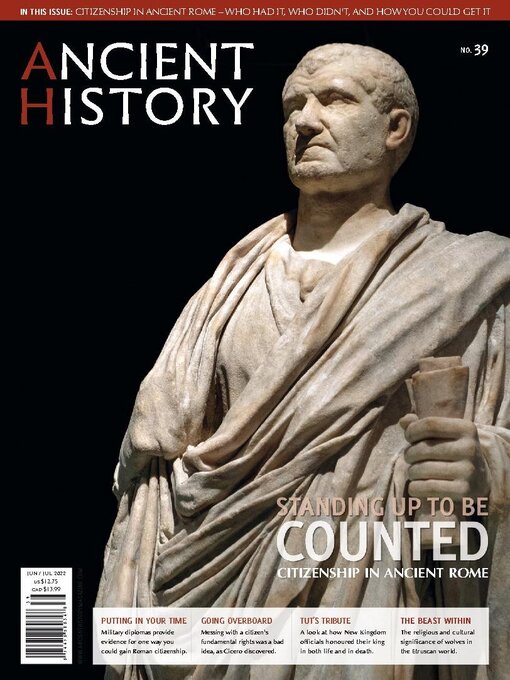
 AH 52
AH 52
 AH 51
AH 51
 AH 50
AH 50
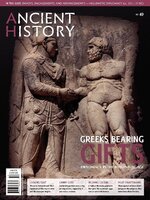 AH 49
AH 49
 AH 48
AH 48
 AH 47
AH 47
 AH 46
AH 46
 AH 45
AH 45
 AH 44
AH 44
 AH 43
AH 43
 AH 42
AH 42
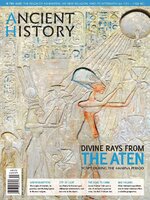 AH 41
AH 41
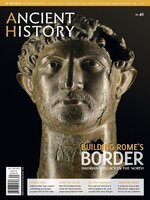 AH 40
AH 40
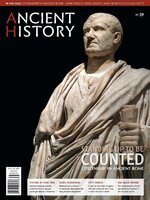 AH 39
AH 39
 AH 38
AH 38
 AH 37
AH 37
 AH 36
AH 36
 AH 35
AH 35
